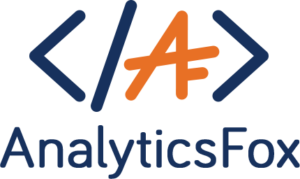To gain value from the cloud, companies need to invest in a cloud-enabled, operating model.
Companies that adopt cloud, reduce time on bringing new innovation to market, innovate more easily, and scale more efficiently—while also reducing technology risk. This enables the organization to enhance scalability, and security resulting in business agility.
Unfortunately, the verdict is still out on what constitutes a successful cloud implementation to actually capture that value
The statement is still in conflict on how implementing cloud would add up real value to the business, and in what way?
Stating cloud too narrowly, limiting with only data platforms, or hosting platforms will definitely give failure if considered for long terms.
Because to run & operate holistically on the cloud organizations need a well-defined design architecture, to protect the system from the increased risk of disruptions, attackers, with modern technology platforms that enable business agility and innovation.
Companies that reap value from cloud platforms treat their adoption as a business-technology transformation by doing three things:
Focusing investments on business domains where the cloud can enable increased revenues and improved margins
The vast majority of the value the cloud generates comes from increased agility, innovation, and resilience provided to the business with sustained velocity.
People requires integrating reusability and composability into cloud adoption so that investments in modernizing can be rapidly scaled throughout the organization,
Enabling to create of more innovative business offerings:
The cloud service provider provides native as well as third-party ecosystems & thousands of more services. And these services are evolving day & night, giving 2 fold growth, providing the advanced featuring technology NLP, Facial recognition & quantum computing, etc.
Faster time to market: Cloud-native companies can automate the deployment of code hundreds or thousands of times per day. Even traditional enterprises have found that automated cloud platforms allow them to release new capabilities daily, enabling them to respond to market demands and quickly test what does and doesn’t work. Resulting companies are able to bring new capabilities 20 – 40 times faster.
Risk Reduction: Cloud transforms security architecture and at the same time and provides a great opportunity to reduce the operational cost overhead. Cyber-first design that automatically embeds robust standardized authentication, hardened infrastructure, and a resilient interconnected data-center availability zone is required to take advantage of the multibillion-dollar investments CSPs have made in security operations.
Efficient scalability: Cloud enables companies to automatically add capacity to meet surge demand (in response to increasing customer usage, for example) and to scale-out new services in seconds rather than the weeks it can take to procure additional on-premises servers.
A financial-information provider determined that moving its customer-facing applications to the cloud could enable much faster and less costly responses to market opportunities.
Moving the systems that help it interact with healthcare providers has proven to be especially attractive because of the ability to accelerate the onboarding of new providers.
Selecting a technology and sourcing model that aligns with business strategy and risk constraints
When technology and sourcing decisions are made incorrectly, compliance, execution success, cybersecurity, and vendor risk are raised. More than one large company has stopped its cloud program cold due to multiple types of risk. In addition to aligning with the company’s risk appetite, the right technology and source decisions can also “bend the curve” on cloud adoption costs, generating support and excitement for the program across the management team.
Change operating model to opt more cloud
To capture the value of migrating to the cloud requires both changing the how IT works & How it works for business, Need to follow while building a cloud-ready operating model
Make it a product. Shift it from IT- projects to Technology-enabled products; Automated as a service used by both customers & employees
Make it a delightful experience for developers, and rethinks to design & architecture in such a way.
Integration with business, need a knowledgeable person, to make quick decision to get benefited from the cloud’s agility feature.
Cloud computing should be fully software-defined, automated, and abstracted.
Get transform using Cloud technology, and bring that agility to your business, with our industry expert cloud consultant
Contact us today, book a demo call at, sales@analyticsfoxsoftwares.com


